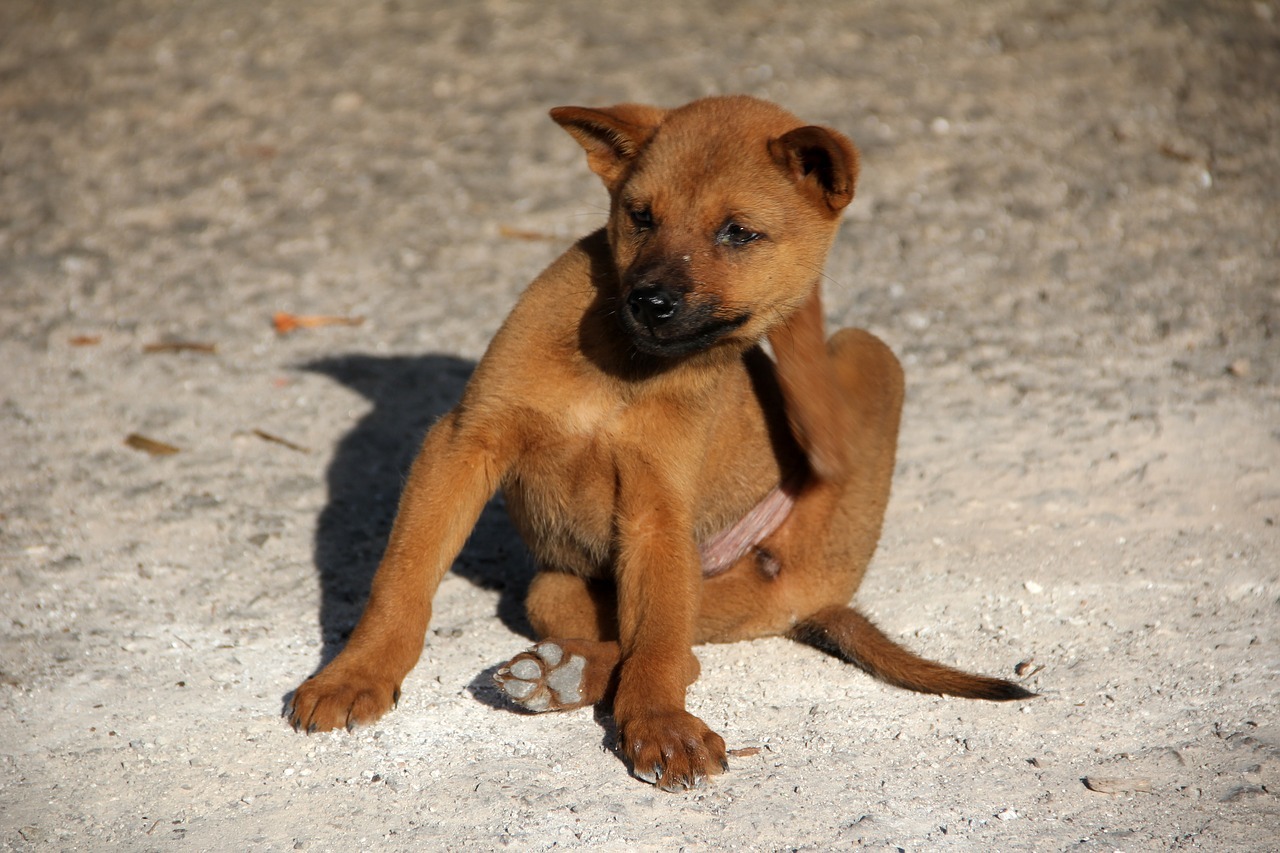Most Common Dog Diseases: What to Watch Out For

It’s scary bringing our new canine friends out into the world without knowing what atrocious bacteria, viruses, and/or illnesses can cause them harm. There are a vast number of things that can cause different symptoms in different types of breeds. It’s hard to keep track sometimes! The goal of this article is to alleviate some of that stress and share with you some of the most common diseases found in dogs. We will also delve a little deeper into what breeds these diseases are most commonly found in and what symptoms and signs to monitor for. After reading this article, you will feel more confident in how to care for your furry friend in the best way you can. FirstVet doctors will also be here to help along the way, 24/7.
Are you concerned about your pet?
Book a video consultation with an experienced veterinarian within minutes.
- Professional vet advice online
- Low-cost video vet consultations
- Open 24 hours a day, 365 days a year
Canine Influenza (Canine Flu)
Canine influenza is an infectious virus caused by influenza A subtypes H3N8 and H3N2. This virus is highly contagious, especially in high-populated areas such as shelters, dog parks, grooming and boarding facilities, and veterinary hospitals. It tends to have a seasonal trend and is seen most often through winter and the beginning of summer into fall.
Canine influenza is transmitted through aerosolization and fomites (i.e. playing, biting, chewing on the same toys as a dog that is carrying the virus). Clinical signs to watch for in your pet include the following: cough, lethargy, anorexia, and/or fever. There is no specific treatment for canine influenza but there are ways we can treat the symptoms and help your pet feel better in due time.
Luckily, there is a vaccine that aids in the prevention and severity of this virus. If your pet has canine influenza, the symptoms begin within 2-4 days, and they are considered contagious for at least 7 days. The best thing to do is isolate your pet and contact a FirstVet professional for further instructions.
Canine Parvovirus
One of the scariest and most known illnesses in dogs is commonly known as “parvo” or Canine Parvovirus (CPV). Thanks to vaccinations and proper pet care, this virus has slowed down quite a bit but is still important to know about. It is a fatal virus if new puppies and unvaccinated pets are not cared for correctly; the following information will help unpack important signs to watch for and how we can keep our pets safe and healthy.
CPV is transmitted through oronasal exposure with CPV-infected feces. It is a very hardy virus and can live in the environment for many months to years. If a pet licks unknown feces on a walk or plays with a toy that previously had CPV-infected feces on it, there is a high likelihood that they may contract CPV if not vaccinated. Once infected, symptoms will develop rapidly and can include any of the following: bloody diarrhea (most common), vomiting, anorexia, fever, lethargy, and/or depression. Puppies less than the age of 6 months are most commonly infected with CPV, however, unvaccinated adult dogs are also susceptible. There is no treatment for CPV, we are only able to offer supportive care for infected individuals.
The best way to prevent your pet from contracting this fatal illness is through vaccination and isolation. Vaccinations can begin in puppies as young as 6 weeks of age until about 16 weeks of age. If your pet is infected with CPV, it is important to hospitalize your pet for treatment and isolation anywhere from 7-14 days or until clinical signs subside.

Canine Infectious Respiratory Disease – “Kennel Cough”
A respiratory infection commonly known as “kennel cough” is more accurately described as “Canine Infectious Respiratory Disease (CIRD).” CIRD is an umbrella term for a variety of viral and bacterial components that can cause similar symptoms of cough, tracheal sensitivity, lethargy, and/or sneezing. Some of the viruses and bacteria covered under this umbrella include canine distemper, canine parainfluenza, canine influenza (as discussed above), canine herpesvirus, Bordetella bronchiseptica, and Mycoplasma spp.
CIRD is another contagious disease that is contracted via oronasal exposure to aerosolized respiratory secretions. It is similar to canine influenza virus in that it is commonly transmitted in high-population areas, such as dog parks, boarding facilities, shelters, doggy daycares, and grooming facilities.
CIRD is one of the most common respiratory illnesses that dogs can contract in their lifetimes. It is seen all year round, but more prevalent during the winter months. Luckily, antibiotics are not typically needed for the treatment of CIRD. Clinical signs are often mild and resolve on their own within 10 days. The most important thing we can do to prevent this is to ensure that our dogs are current on vaccinations against Bordetella, distemper, and parainfluenza, and ensure that we isolate our pets if currently infected with CIRD.
Reverse Sneezing
You know when your dog makes that loud, honking/snorting sound and you’re not sure whether it’s coming from the throat or the nose? That is a reverse sneeze. In more medical terms, a reverse sneeze is an irritation in the soft palate and throat that causes a spasm. That spasm is known as a reverse sneeze.
This phenomenon sounds scary when you first hear your pup do it, but usually is benign and does not require any treatment. Common causes of this can be anything from excitement, pulling on a leash, to pollen, allergens, perfumes, etc. As soon as the irritant has left the system, the reverse sneezing will resolve itself.
An important thing to note is that when a pet begins to reverse sneeze more frequently than usual, he should likely be taken to the vet to assess his head and neck and ensure there is no other cause of the spasm that is treatable.

External (Skin) Parasites
Everyone is aware that dogs should be on parasite preventatives but what is hard to sometimes understand, is why they are so important. Some of the most common external parasites we struggle with in the United States are fleas, ticks, and heartworms (covered in the next section). They seem harmless enough but can be the cause of major issues if your dog is not on appropriate preventatives.
Fleas are the number one cause of allergic dermatitis in most dogs and cats. The cause of the allergy is usually due to a reaction to the saliva of a flea – so when it bites into our pets, they begin getting itchy and irritated. Fleas are also not the easiest insects to treat once they’ve come into your environment. They will burrow and lay many eggs at a time so new fleas are hatching and causing additional infection to our furry friends, and sometimes to us. Fleas can also harbor intestinal parasites, mostly tapeworms, that can cause diarrhea and/or vomiting.
Next are ticks. Ticks are small insects that can vary between a hard shell and a soft shell. They can latch on and begin to suck blood from our pets and us and transmit a variety of infections as they do this, including but not limited to, Lyme disease, ehrlichiosis, and anaplasmosis. Some ticks can go unnoticed for a long period as they blend in with our furry friend’s fur and will attach themselves on locations that you don’t typically see or feel (inside of the ear, around the ear base, around the paws). If you enjoy hiking or live in an environment where ticks thrive (Arizona, California, Rhode Island), not being on tick preventatives can be very scary not only for our pets but for our safety as well.
Heartworm Disease
As mentioned in the previous section, heartworm disease can be a devastating illness that can be easily prevented with oral and/or topical preventatives.
Heartworms can sometimes be a little complicated but they are a very devastating disease if contracted. It can make a healthy puppy suddenly have a lifetime of heart disease and chronic cough.
Heartworms are passed through the bite of a mosquito and take around 6 months to accurately diagnose. If your pet is not on regular heartworm preventative, the larva can easily pass onto the next stage of its life that cannot be killed by the heartworm preventative anymore and will only be diagnosed via clinical signs of coughing and difficulty breathing or during your dog’s next heartworm test. Once diagnosed, successful treatment of heartworm disease can last anywhere from 3-6 months. Even after treating the last worm, the heart will permanently be damaged. If heartworm disease goes untreated, exercise can cause the worms to lodge into a chamber of the heart and kill your pet instantaneously.
Preventatives help keep our pets safe from these underrated but deadly parasites. One monthly tablet or topical ointment can reduce the chances of any of these diseases by almost 100%. Ask your FirstVet veterinarians about the best products out there for dogs during your next consultation.

Lipomas (“Fatty Tumors”)
A lipoma is a medical term for “benign fatty tumor.” They usually present as round, soft, mobile masses anywhere on the body. They occur most commonly in elder dogs and are usually an accumulation of fat into a mass-like form. Lipomas do not have to be surgically removed as they are typically not cancerous, however, they do tend to expand and grow and can sometimes cause hindrance in walking and moving around for some of our pet friends. In these cases, removing them is the best option.
Although lipomas are benign and harmless, it is always important to get each and every mass found on your pet aspirated and diagnosed. Some scary masses that look and feel like a lipoma, are soft and round, can be missed if we diagnose solely on shape and appearance. If your pet has masses that you are concerned about, feel free to ask one of our FirstVet colleagues to take a look for you!
Urinary Tract Infections
A urinary tract infection is when there is a “breach in host defense” that allows bacteria or fungi to invade and cause infection within the bladder/urinary tract. Urinary tract infections (UTIs) can occur in dogs of any age. Symptoms of a UTI include increased urination and increased thirst, urinating small amounts multiple times, and/or blood in the urine. These infections can be uncomfortable and painful for our furry friends.
Once diagnosed, it is important to begin treatment for a UTI as soon as possible. The best way to diagnose this is to collect a sterile urine sample and observe for bacteria in the urine. If present, submit for a urine culture to differentiate between which bacteria is being isolated and what antibiotic will be the most beneficial. This step is very important in treating a UTI as many bacteria are resistant to different antibiotics.
If a UTI goes untreated for a long period, there is a concern for it traveling up into the kidneys and causing a much more painful and difficult to treat infection. If your pet is showing signs of odd urinary behavior, please schedule a consultation with a FirstVet veterinarian to discuss symptoms and concerns.
Pancreatitis
The pancreas is a very delicate organ of the body and when it gets angry, it can be quite painful. Pancreatitis is the inflammation of the pancreas. There are two types of pancreatitis – acute and chronic.
Acute pancreatitis is often more severe and can be fatal if not treated and managed effectively. Causes of acute pancreatitis vary between endocrinopathies (diabetes, Cushing’s disease), obesity, and malnutrition – i.e. feeding high-fat diets, and excessive amounts of human foods.
Chronic pancreatitis is often characterized as a side effect that occurs from recurrent episodes of acute pancreatitis. The pancreas at this time is damaged to the point that it is always inflamed to a small degree. There is one type of chronic pancreatitis found specifically in English Cocker Spaniels that is autoimmune.
Clinical signs include vomiting, abdominal pain, lethargy, anorexia, fever, and diarrhea. These symptoms can vary from mild to severe depending on the type of pancreatitis present in the pet. There are also a few breeds that are predisposed to pancreatitis – Cocker Spaniels, Cavalier King Charles Spaniel, Dachshund, Miniature Poodle, Miniature Schnauzer, and Yorkshire Terriers.
Unfortunately, there is no specific therapy for pancreatitis. The object of managing and treating this illness is by treating the clinical signs. Anti-nausea medication, bland diets for diarrhea, fluid therapy for fevers, and pain management. Because there is no specific therapy, it can be difficult to treat. The best way to prevent this illness is by being careful about the types of food you feed your beloved pet and refraining from human foods. Contact a FirstVet associate to discuss safe and healthy diet options if you have an at-risk breed at home.

Heatstroke
Heatstroke in dogs is similar to that of humans. It occurs when the pet is exposed to elevated temperatures from either a hot or humid environment or strenuous activity. Common ways that a pet gets heatstroke include being enclosed in a hot car for an extended time, hiking or running on a very hot or humid day with no breaks for water, or being exposed to the sun without any access to shade.
Signs that your pet is having a heatstroke include pale mucus membranes, panting/difficulty breathing, dehydration, disorientation, and/or collapse. In very severe cases, pets may also have evidence of blood in vomit or stool.
If your pet is having a heatstroke, the best thing to do is begin cooling therapy on your own as you travel to the nearest veterinary hospital for additional treatment. Soak towels in cool water and place them around the pet’s body, ensure the air conditioner is on at all times, or windows are rolled down. Once at the hospital, your pet’s temperature will be monitored and fluid therapy will begin to aid in cooling your pet down. We want to ensure that the temperature does not decrease too rapidly as this can be dangerous for hypothermia.
Heatstroke can be fatal if not managed as soon as possible or if severe on presentation. Ensure that your pet always has access to fresh water, shade, and ensure the weather is safe for a hike or run beforehand.
Read more:
Pet Medication Guide: What Common Medications Can and Can’t Dogs Take?
Common Types of Skin Tumors in Dogs
How to Examine Your Pet at Home: A Step-By-Step Guide
Need to speak with a veterinarian regarding your dog’s health, behavior, or another condition?
Click here to schedule a video consult to speak to one of our vets. You can also download the FirstVet app from the Apple App Store and Google Play Stores.
More articles about Dog
Are you concerned about your pet?
Book a video consultation with an experienced veterinarian within minutes.